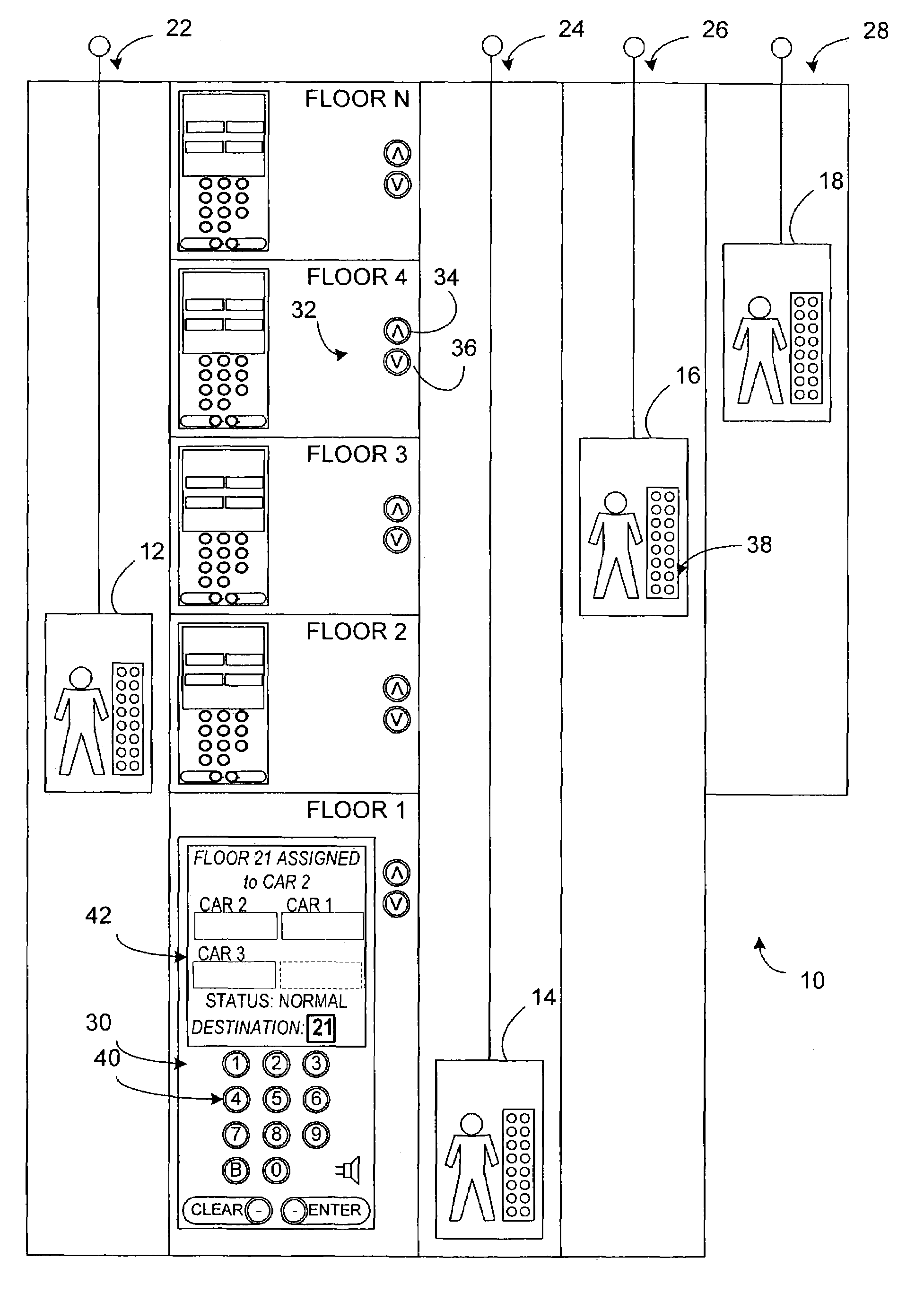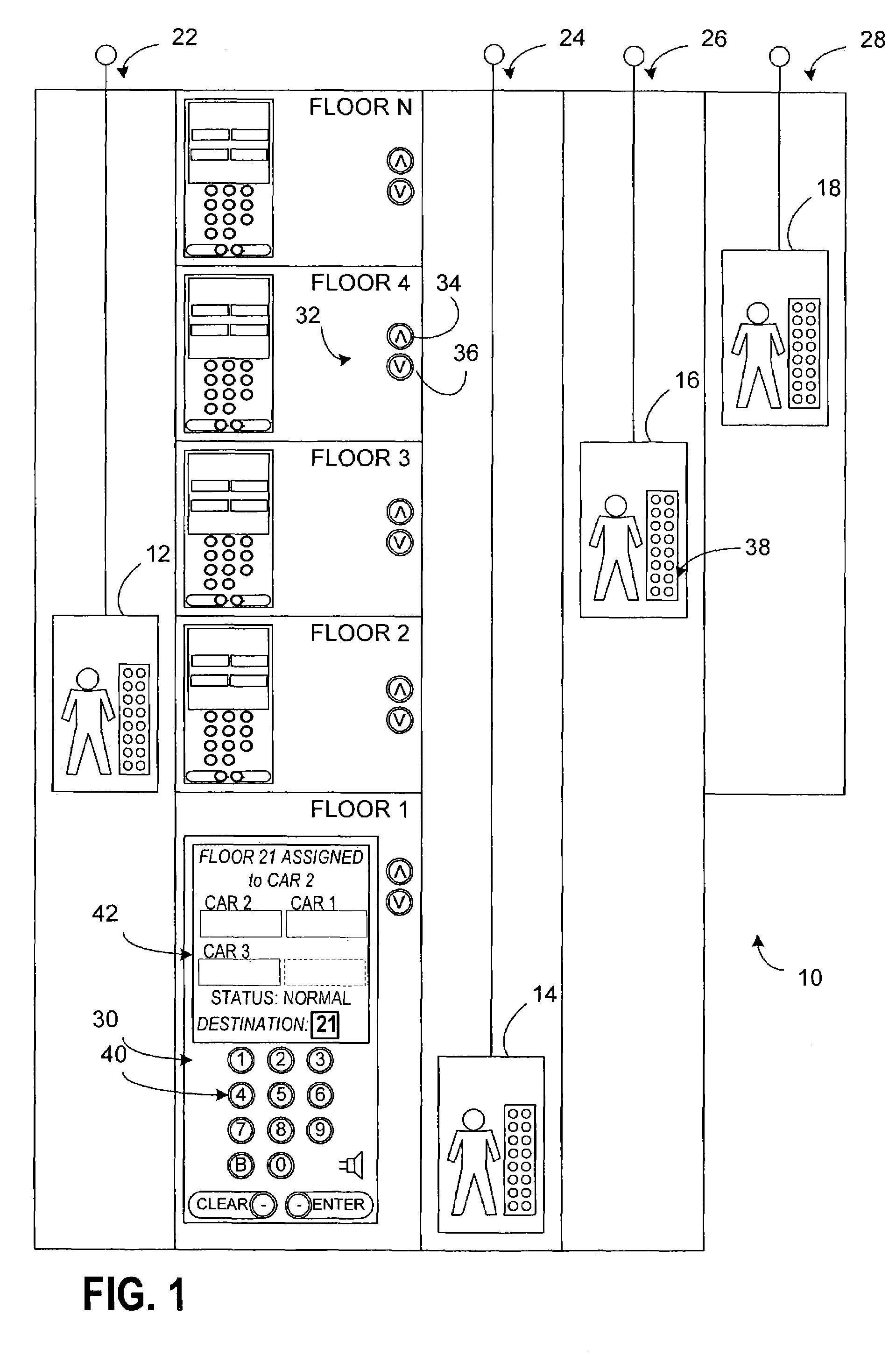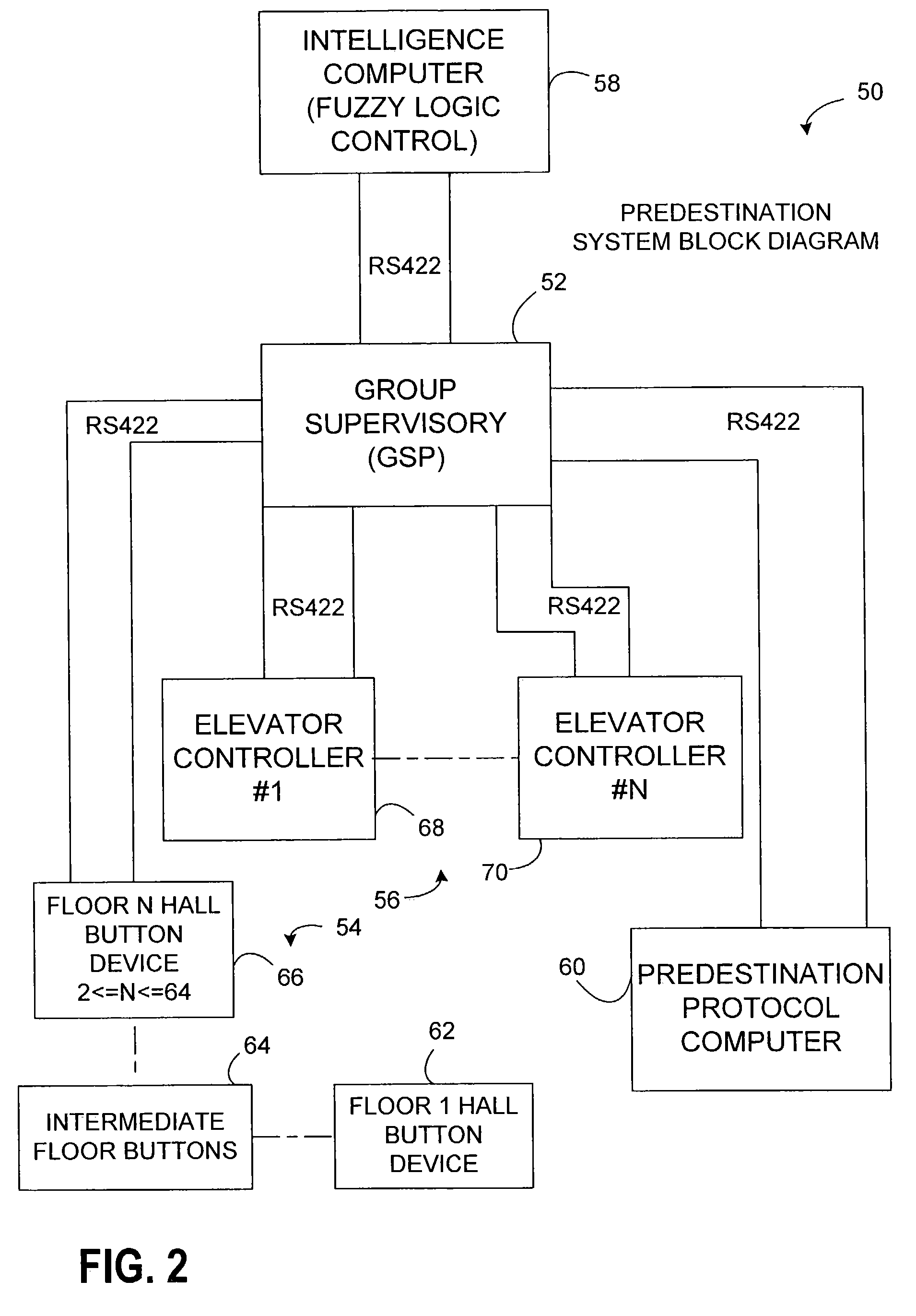Elevator destination protocol control with flexible user interface
a technology of destination protocol and user interface, applied in the field of elevator control system, can solve the problems of inconvenient elevator system, elevator system not responsive to the number of passengers, rudimentary car assignment protocols that did not, etc., and achieve the effect of enhancing the efficiency of user transportation by destination protocol
- Summary
- Abstract
- Description
- Claims
- Application Information
AI Technical Summary
Benefits of technology
Problems solved by technology
Method used
Image
Examples
Embodiment Construction
[0022]Turning to the Drawings, wherein like numerals denote like components throughout the several views, FIG. 1 depicts an elevator system 10 having multiple elevator cars 12, 14, 16, 18 in respective elevator shafts 22, 24, 26, 28. The elevator system 10 advantageously enables predestination assignment of potential passengers in respective elevator waiting areas (Floor 1, 2, 3, 4, N), specifically by a graphical hallway call device 30. Thereby, the elevator system 10 may assign an elevator car 12–18 in a manner that reduces the wait time for the potential passengers and avoids a disproportionate number of intermediate stops for current passengers.
[0023]In addition to the advantages of predestination assignment, the elevator system 10 maintains a traditional elevator user interface 32 with up and down hall call buttons 34, 36, which may provide a backup interface for instances wherein the elevator destination protocol control is not desired or available. The traditional elevator us...
PUM
 Login to View More
Login to View More Abstract
Description
Claims
Application Information
 Login to View More
Login to View More - R&D
- Intellectual Property
- Life Sciences
- Materials
- Tech Scout
- Unparalleled Data Quality
- Higher Quality Content
- 60% Fewer Hallucinations
Browse by: Latest US Patents, China's latest patents, Technical Efficacy Thesaurus, Application Domain, Technology Topic, Popular Technical Reports.
© 2025 PatSnap. All rights reserved.Legal|Privacy policy|Modern Slavery Act Transparency Statement|Sitemap|About US| Contact US: help@patsnap.com



